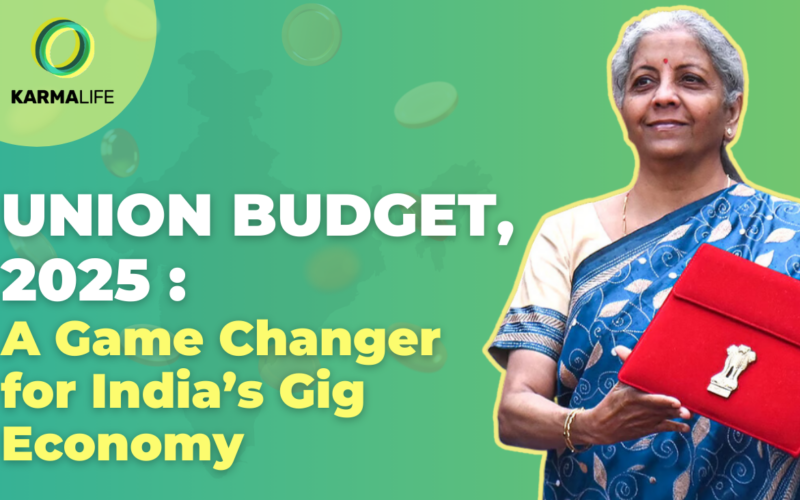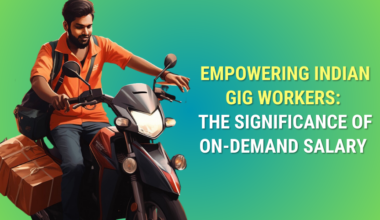India’s gig economy has been a driving force behind its economic growth, yet for years, gig workers have remained on the fringes of formal employment—lacking job security, financial stability, and social protections. The Union Budget 2025 marks a historic shift, finally extending long-overdue recognition and support to this vital workforce.
With initiatives like identity cards for gig workers, e-Shram registration for social security, and the extension of the PM Jan Arogya Yojana (PM-JAY) for healthcare coverage, the government is taking definitive steps toward formalizing, securing, and empowering gig workers. Let’s break down these key reforms and what they mean for India’s 7.7 million gig workers.
1. Identity Cards for Gig Workers: Formal Recognition at Last
For years, gig workers in India—delivery executives, drivers, freelancers, and service providers—have operated without formal recognition. Without an official worker identity, they have struggled with financial inclusion, access to credit, and job security.
What’s Changing?
The 2025 budget introduces a unique identity card for gig workers, giving them official recognition under India’s labor framework. This ID will be linked to their e-Shram registration, enabling them to access government benefits, financial services, and employment opportunities seamlessly.
Why It Matters:
✅ Recognition & Rights: Gig workers will be acknowledged as a legitimate workforce, paving the way for stronger labor protections.
✅ Financial Inclusion: Banks and NBFCs will have a formal record of gig workers, helping them access loans, insurance, and credit products.
✅ Better Job Opportunities: With a structured database, gig workers can be matched with jobs more effectively, improving employment prospects.
This move is a critical step toward bridging the gap between gig work and formal employment, making financial stability a reality for millions.
2. e-Shram Registration: A Gateway to Social Security
Launched in 2021, the e-Shram portal was India’s first attempt at creating a national database of unorganized workers. However, many gig workers remained unaware or unregistered, leaving them out of key social security benefits.
What’s Changing?
The 2025 budget mandates e-Shram registration for all gig workers, making them eligible for a host of government welfare schemes, including:
•Pension benefits under the Atal Pension Yojana
•Life and disability insurance under the Pradhan Mantri Suraksha Bima Yojana
•Accidental cover under Pradhan Mantri Jeevan Jyoti Bima Yojana
Why It Matters:
✅ Financial Security: Ensures gig workers have a safety net for old age, disabilities, or unforeseen emergencies.
✅ Insurance Coverage: Provides crucial financial protection for workers who often face unpredictable work conditions.
✅ Direct Benefit Transfers (DBT): Workers can receive government assistance directly into their bank accounts.
With over 28 crore unorganized workers already registered, this push will make social security more accessible and effective for gig workers who need it most.
3. PM Jan Arogya Yojana (PM-JAY): Healthcare for Gig Workers
One of the biggest challenges for gig workers has been healthcare costs. Without employer-provided health insurance, gig workers are often forced to rely on out-of-pocket expenses, which can be financially devastating.
What’s Changing?
The Union Budget 2025 extends PM Jan Arogya Yojana (PM-JAY) coverage to gig workers, giving them access to free or subsidized medical care at over 24,000 empaneled hospitals across India. This means gig workers can now get treatment for critical illnesses, hospitalization, and surgeries without financial strain.
Why It Matters:
✅ Affordable Healthcare: Free coverage of up to ₹5 lakh per family per year.
✅ Reduced Financial Stress: No longer have to dip into savings or take loans for medical emergencies.
✅ Wider Coverage: Extends beyond urban centers to rural gig workers.
For a workforce that lives paycheck to paycheck, this healthcare safety net will enhance their quality of life and financial stability.
The Road Ahead: What Gig Workers Should Do Next
With these policy shifts, the gig economy is on the brink of transformation. But recognition alone is not enough—gig workers must take proactive steps to secure their future.
1. Get Registered on e-Shram
If you’re a gig worker, registering on the e-Shram portal should be your first priority. It’s free, and it opens the door to numerous social security benefits.
2. Upskill & Stay Competitive
With growing formalization, competition in the gig economy will increase. Investing in skill development, digital literacy, and certifications can help workers stay ahead. Platforms like NSDC, Udemy, and Coursera offer gig-specific training programs.
3. Explore Financial Products Designed for Gig Workers
Now that gig workers are being recognized, financial institutions will expand lending and credit facilities for them. Look for customized credit solutions like Earned Wage Access (EWA), insurance plans, and savings tools that cater to flexible income earners.
A New Era for India’s Gig Economy
The Union Budget 2025 is a watershed moment for gig workers. By formalizing their identity, expanding social security, and providing healthcare coverage, the government is laying the foundation for a more secure, stable, and empowered gig workforce.
This is just the beginning. With further reforms, skill-building initiatives, and financial inclusion measures, India’s gig economy is poised for unprecedented growth—ensuring that every worker, regardless of their employment model, gets the security and opportunities they deserve.
🔹 The future of gig work is here. Are you ready to embrace it? 🔹






